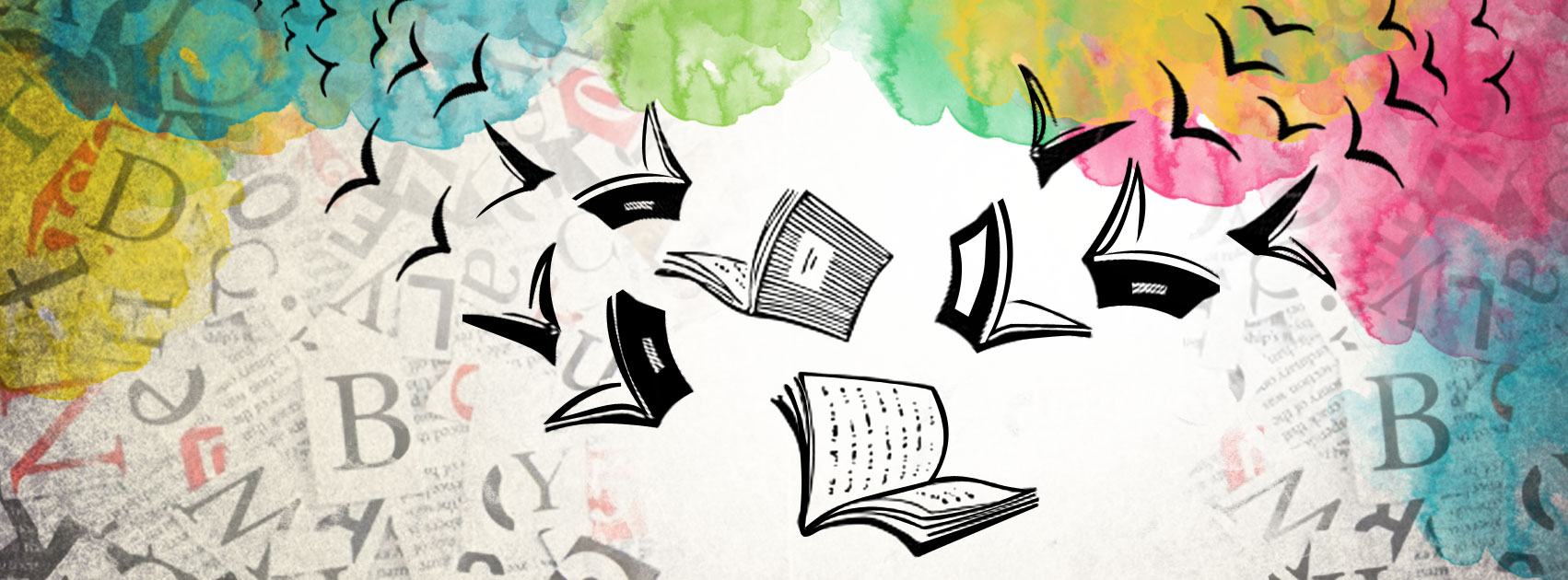 ~ By Amanda Smith In last week’s blog, Lindsay Ward encouraged us to lean into our creativity and reinvest in our goals during this truly bizarre time. For some of us, writing in the midst of quarantine feels like sanity and welcome routine. However, I have heard other writers mention that they are unable to write, that they are not in the head-space to be creative. And others’ writing time is consumed by keeping young children on track with school work, or working longer hours from home. So how do we keep our writing goals? At 24 Carrot Writing we have always proposed two kinds of goals: Creative goals and craft goals. The beauty of setting these two kinds of goals, is they access different skill-sets and even different brain hemispheres, so we can always keep moving forward in one area when the other seems inaccessible. If you are happily plugging along with your creative goals, writing your story and meeting your word-count targets, carry on. You’ve got this! However, I would urge those writers who feel as if their muse is quarantined in a whole different zip code to lean into those craft goals. Here are some ideas:
These last few ideas are craft/ creative cross-overs:
Above all, feed your creative soul with what brings you joy! If writing doesn’t bring you joy right now, that is okay. Step away. Follow a few online watercolor tutorials. Play with clay. Write some poetry. Go dig in the garden. Make music. Sew a few face masks. Because your marvelous mind will be puzzling at your story, carving out your characters, and coming up with fresh ideas, all waiting for you when you are ready to pick up the pen again.
0 Comments
 Guest Post by Lindsay Ward We are excited to host, Lindsay Ward of Critter Lit on 24 Carrot Writing. Lindsay has a BFA in Illustration from Syracuse University and her most recent books include This Book Is Gray and the Amazon Bestselling Dexter T. Rexter series: Don’t Forget Dexter!, It’s Show and Tell, Dexter!, and Vacation for Dexter! with Two Lions. Her work has been reviewed in Kirkus Reviews, Publisher’s Weekly, and the New York Times. Lindsay is the founder of Critter Lit, a free picture book manuscript and illustration critique service for up-and-coming authors and illustrators. We had originally planned on having Lindsay share a blog about giving and receiving critiques. But in these uncertain times, Lindsay has offered up a more poignant reflection on how to use your writing and goals to work through the stress of our current situation. Welcome Lindsay! My life is hectic and busy with three kiddos under five. I’m trying to finish book deadlines, come up with new ideas, learn how to homeschool my oldest son, and stay sane amidst one of the biggest global events to happen in 100 years. Things are nuts right now. And I know you are all reading this thinking, “yep, life is bananas.” And it is. BUT, the one thing I’ve found that has kept me going and provided some balance has been creative work. Sitting down to write and draw everyday has given me a sense of purpose and structure, which I need. Especially now. 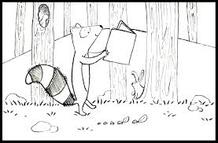 In early 2017 I launched Critter Lit; a website where authors and illustrators could receive free one-time critiques. I wanted to create a community where people could get feedback in a reasonable amount of time. One of the most frustrating things about publishing is how slow it is. Patience is key. But let’s be honest, nobody is that patient. I’ve been doing this for ten years and I’m just as impatient on submission now as I was the first time I went out. So I decided I could promise people two weeks. That seemed like a reasonable amount of time. It turned out, a lot of other people thought so too.  When I started Critter Lit, it was just me squeezing time between deadlines to read and critique manuscripts— but I always made the two week deadline. It was important to me to make the time to give back and help up-and-coming authors, as others had done for me. Many people took the time to critique my work and offer advice before I was first published. Now, my husband, Frank Tupta, and I run Critter Lit together. His first picture book comes out this July. In the beginning, most submissions came from writers who were just starting out. But soon published authors and illustrators started sending in manuscripts and art for critique. Sometimes they’d want to know if I’d give the same feedback as they were hearing in their critique group. Other times, they wanted some input before sharing the project with their agent. Since then, Critter Lit has grown to include a wide range of submissions. I’m thrilled that so many people have found our site helpful. After about a year, I started to hear back from people who had received offers of representation or sold their manuscript to an editor. It’s incredible to share in the excitement of those moments with other creatives. That feeling never gets old. When I worry about what is going on right now, I try to remind myself of those moments.  In the midst of this pandemic, there has been a lot of concern as to the state of publishing. What’s going to happen? Will publishers still be buying books? When will things go back to normal? I ask those questions too. This is my family’s livelihood. My husband and I don’t have other jobs. This is it. Full-time writing and illustrating. And right now that is completely terrifying. I can’t control what’s going to happen. I don’t know what publishers are going to do. BUT, I do know they have to keep buying books to make a profit when this is all over. So I’m going to keep writing and drawing. I’m going to stay hopeful. Which, I’ll be honest, is hard right now. Writing goals and deadlines are a welcome and helpful distraction and the amazing KidLit community and the critique requests we keep getting at Critter Lit have kept me motivated. I love that you are all still writing and trying to put your work out there. This is the perfect time to lean into our creative energy, keep writing, reinvest in our writing goals and appreciate the wonderful work we are all creating. Be well everyone. Lindsay 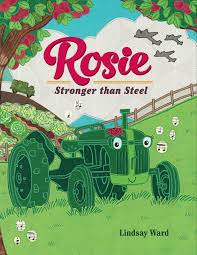 For more information on Lindsay please visit her at https://lindsaymward.com/books/ and to order her new book, Rosie: Stronger Than Steel (Two Lions, April 2020) click here. For more information on Critter Lit visit here. 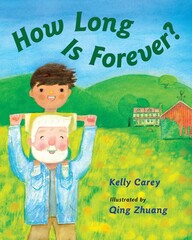 By Annie Cronin Romano It is with joy and pride that the 24 Carrot Writing crew is celebrating Kelly Carey’s debut picture book HOW LONG IS FOREVER?, which launches Tuesday, April 7th. HOW LONG IS FOREVER? (Charlesbridge, 2020) is the story of a young boy’s quest to understand the essence of what forever really is. Through delightful storytelling, Kelly cleverly depicts how a child’s idea of “forever” (Grandma's pie will take forever to bake) varies considerably from that of an older person. This is particularly relevant during this time of stay-at-home orders when many children are feeling as though they've been home forever. As Mason hunts for the meaning of forever, he enjoys all the beauty and treasures his grandparent’s farm holds. Perspective is important in this story, and parents and teachers will find many jumping-off points for discussion regarding time and perspective. Children will easily engage with Qing Zhuang’s vibrant colored pencil and watercolor illustrations. And blueberry pie plays a key role in Kelly’s book as well. How yummy is that? I had the pleasure of reading early drafts of HOW LONG IS FOREVER? and watching Kelly incorporate critique and feedback suggestions all the while staying true to her original vision for this story. As one of the co-founders of 24 Carrot Writing, Kelly knows the importance of setting writing goals and holding herself accountable to them. Her dedication to her craft is fundamental to her success. Oh, and she’s one immensely talented writer, too!
Congratulation, Kelly, on your sweet debut picture book, HOW LONG IS FOREVER! To quote Kirkus, "It won't take kids forever to return to this one." (https://www.kirkusreviews.com/book-reviews/kelly-carey/how-long-is-forever/) To learn more about Kelly Carey, visit her website: http://www.kcareywrites.com/. To learn more about illustrator Qing Zhuang, go to https://www.qingthings.com/. |
Peruse blogs for advice and tips from KidLit creatives.
Categories
All
Archives
April 2024
Click to set custom HTML
Click on the RSS Feed button above to receive notifications of new posts on this blog.
|
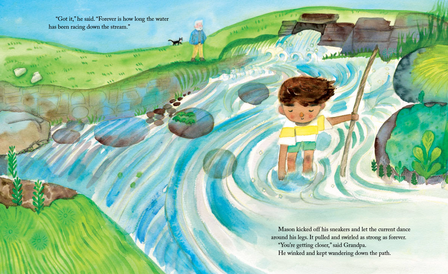
 RSS Feed
RSS Feed